
A SHORT INTRODUCTION ABOUT THE DEVELOPMENT OF KEYBOARD INSTRUMENTS BY KEES ROSENHART
Birds can chirp beautifully, wolves can howl heartbreakingly and frogs can croak nicely together, but we humans possess several musical possibilities. We can consciously choose from pitches, timbres, rhythms, etc. and play with them as we please. We humans are the only living beings who can make music at will.
In addition, we are not satisfied with our physical possibilities, such as singing, humming, clicking our tongues, clapping our hands and stamping our feet. We also use all kinds of materials to make music with: Gut, hair, skin, wood, reeds, metal, glass, wind, water, electricity. Too many to count. The use of all these different materials led and leads to an immense flood of types of musical instruments.
Musicologists, after long efforts and disputes, have managed to bring order into this chaotic variety of musical instruments. The result was that the piano and its predecessors, the harpsichord (later the grand piano) and the clavichord (later the square piano), were first classified as stringed instruments in terms of construction but then as the genus of zither instruments. The characteristic feature of the construction of zithers is that the plane of the strings runs parallel to the surface of the sounding body. Other well-known instruments of this category are the dulcimer, the psaltery and, popular in the Danubian lands, the cimbalom. The sound of a cimbal reminds us of the sound of an ancient piano.
Until well into the 18th century, the term “piano” was then usually written as “clavier”, the collective name for various keyboard instruments such as organ, clavichord and harpsichord. This becomes clear, for example, in J.S. Bach’s “Clavierübung”. This work consists of 4 parts. The 1st part consists of 6 partitas which can be played on the harpsichord and on the clavichord. The 2nd part (the “Italian Concerto” and the “Partita in B minor”) has instructions for manual changes and should ideally be played on a harpsichord with 2 keyboards. The 3rd part consists mostly of chorale arrangements for organ with and without pedal. The 4th part, the” Goldberg Variations”, is explicitly written for harpsichord with 2 manuals.
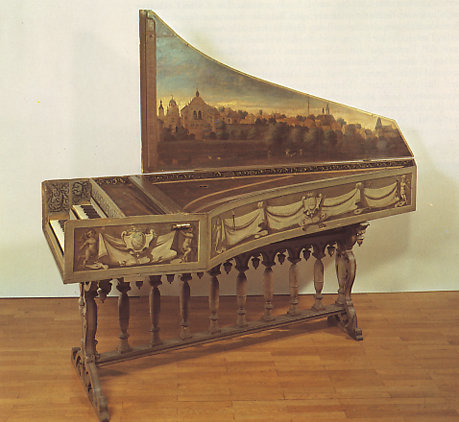
harpsichord with 2 manuals
In 1783, C. Ph. E. Bach self-published a collection of piano music with the following title: “Clavier Sonaten und Freye Fantasien nebst einige Rondos fürs Fortepiano für Kenner und Liebhaber”. The term “clavier” in this case refers to the clavichord. The piano (fortepiano) is already indicated here separately.
In the first place, professional musicians used the harpsichord as an accompanying instrument (continuo player), but also for solo literature. The clavichord was used in the first time mainly as a study instrument. Only late in the 18th century the clavichord got its own literature, especially in Northern Germany. Financially strong families could also afford harpsichords, spinets, virginals and muselars for their household. Some even owned a house organ. Around 1800, the piano (upright) very suddenly took over the role of the harpsichord and clavichord, and a new group of users arrived: the bourgeoisie.
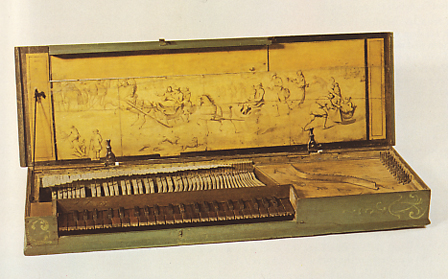
early clavichord
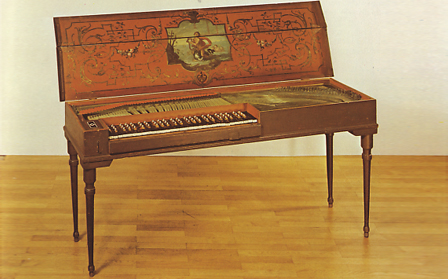
later clavichord
Mechanically plucked psalteries have been known since about 1375. From these came instruments such as the harpsichord, spinet, virginal and muselar. On the other hand, we know mechanically struck psalteries since about 1710 (Bartolommeo Cristofori in Florence): the fortepiano. Another attempt by Arnout van Zwolle ca. 1440, the dulce melos, received no successor. Cristofori presented his invention as a “gravicembalo col pianoforte” (literally: harpsichord with soft and loud). On this instrument – the archetype of a piano – the sides could be struck stronger or weaker with hammers. In the Museum of Musical Instruments of the University of Leipzig you can still find an original instrument.
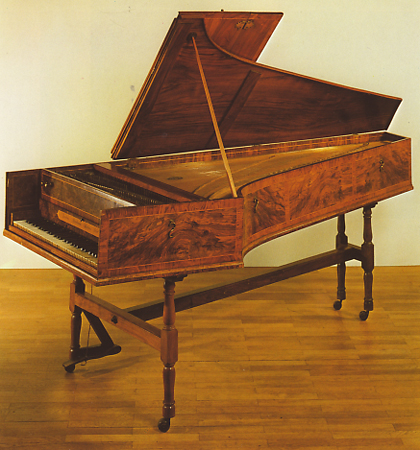
early fortepiano
The piano (piano) is suitable for a wide repertoire of very broad musical styles, such as Viennese Classical, German Romantic, French Impressionist, Late Classical, Jazz, Pop, and so on. The piano knows a rich solo literature for one or more pianists, for one or more pianos or for piano and orchestra. The piano plays an important role in chamber music in duets, trios and quartets. Sometimes we hear the piano as an orchestral instrument. The pianist is also often used to accompany vocalists, singers and choirs, and also as a repetiteur in ballet.
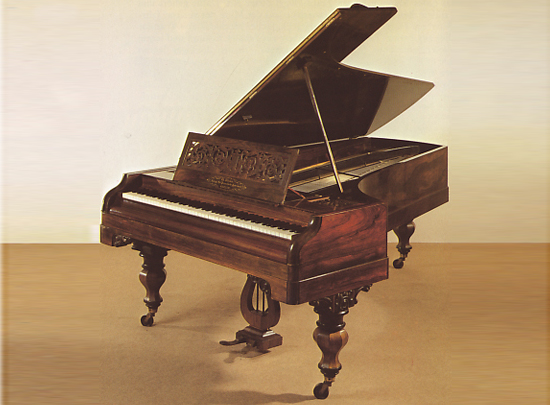
grand piano from the Romantic period
The thing that the piano has in common with other keyboard instruments is the fact that the whole Western tonal system is clearly visible “before your eyes”. The tonal system is within reach. The modern piano also has the total range of 6 octaves. Such a situation invites to improvise and work on well-known compositions for the piano. Pieces originally written for ensemble or orchestra: Piano reductions and piano arrangements are created. This also makes the piano so particularly well suited as a tool for harmonizing and composing.
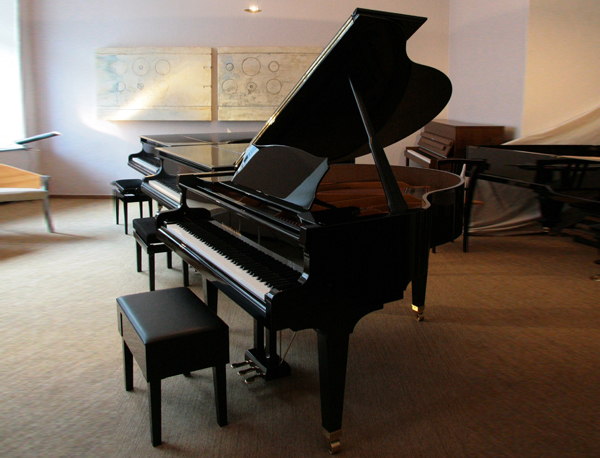
modern grand piano
Kees Rosenhart
Kees Rosenhart (Haarlem 1939) was for a long time organist of the Waalse Kerk in Haarlem, where he played the Friederichs organ from 1808. In the seventies and eighties he was principal harpsichord teacher at the conservatory in Arnhem and Amsterdam. In the period before that he taught at the music schools in Kampen, Hilversum, Haarlem and Beverwijk. He studied harpsichord with Gustav Leonhardt and organ with Albert de Klerk at the former Amsterdam Conservatory.
Kees Rosenhart is the author of Amsterdam Harpsichord Tutor. He has published regularly on the performance practice of early music in various journals.
He is one of the founders of the Nederlands Clavichord Genootschap and one of the initiators of the Haarlem Clavecimbeldagen, which take place twice a year.
For the foundation “Stichting voor en met orgel” he made with Wim Husslage historical recordings of important historical organs in and around Haarlem, of the Müller organ in Beverwijk, and of the organ in Oosthuizen, the oldest organ in the Netherlands. In the past 20 years he has immersed himself in the music of keyboard instruments from the 17th and 18th centuries, focusing on organ, clavichord, harpsichord and fortepiano.
Website: https://www.keesrosenhart.com/
Text by Kees Rosenhart / Translation from Dutch into German and English by Gabriele and Johannes Paqué
